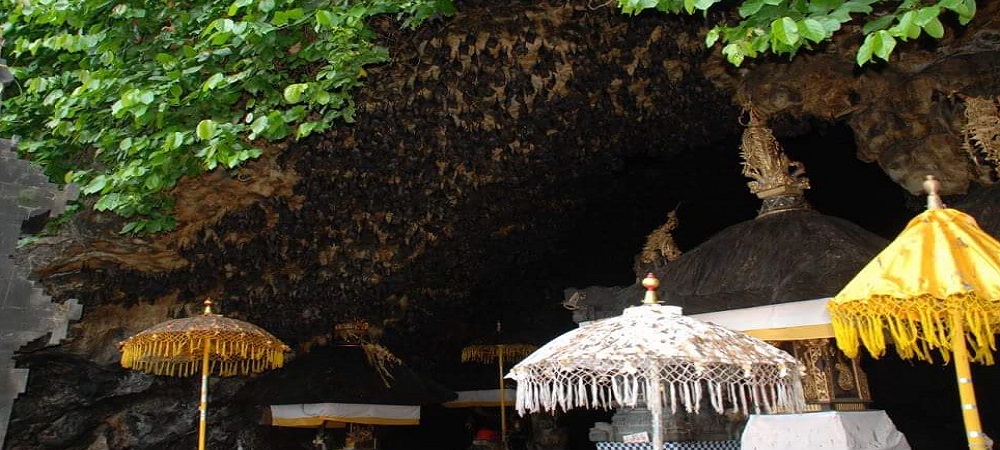
Goa Lawah Temple is located in the village of Pesinggahan, Klungkung, Bali. as for this temple in the form of a natural cave surrounded by several pelinggih buildings. Its status as one of the nine temples to support the winds or Kahyangan Padma Bhuwana Temple makes this temple located in Pesinggahan Village, Dawan District, Klungkung, one of the most important temples for Balinese people. Gua Lawah Temple in Balinese Hindu belief is positioned as a buffer temple towards the southeast from mainland Bali
The name Goa Lawah consists of the words goa and lawah. The word Lawah is Balinese which means bat. So Goa Lawah temple is a temple in which there is a cave which is inhabited by thousands of bats. This temple is intended as a place to worship Baruna God / God of the sea. The uniqueness of Goa Lawah temple is in a cave that is under shady trees and inside the walls of the cave's mouth, there are many hanging bats. At the mouth of the cave were built several shrines. In front of the cave in the temple area, there are also many places of worship.According to local people's beliefs, this cave passage is connected to the mouth of the Raja Cave in the Besakih Temple Complex, which is about 30 kilometers away. It's just that, in 1917, the tunnel collapsed due to a big earthquake.
This temple was founded in 929 Saka or 1007 AD on the initiative of Mpu Kuturan, an advisor to Raja Anak Wungsu. It is also stated that in the 14th century AD, this temple underwent restoration and expansion of the complex. . According to Lontar Prekempa Gunung Agung, Gua Lawah Temple represents the head of Naga Basuki, while Pura Gua Raja in the Besakih Temple Complex represents the tail. In Hindu mythology, Naga Basuki is one of the three incarnate dragons of gods sent down to save the earth. Naga Basuki is a symbol of the balance of cycles that occur in nature.
When the Dutch attacked the Klungkung kingdom in 1849 during the Kusamba War, the cave temple was one of the key points during the war. The conflict in the Kusamba War was between the Dutch East Indies Army led by Andreas Victor Michiels and the Klungkung Kingdom led by Dewa Agung Wife Kanya.
Temple decorations evolved over time. In the early 20th century, the porcelain ceramic plates that were installed in the temples and gates of Goa Lawah Temple were common. This treatment can still be found in other old temples in Bali such as Pura Kehen. Today, the decoration of porcelain ceramic plates in temples and gates has been reduced.